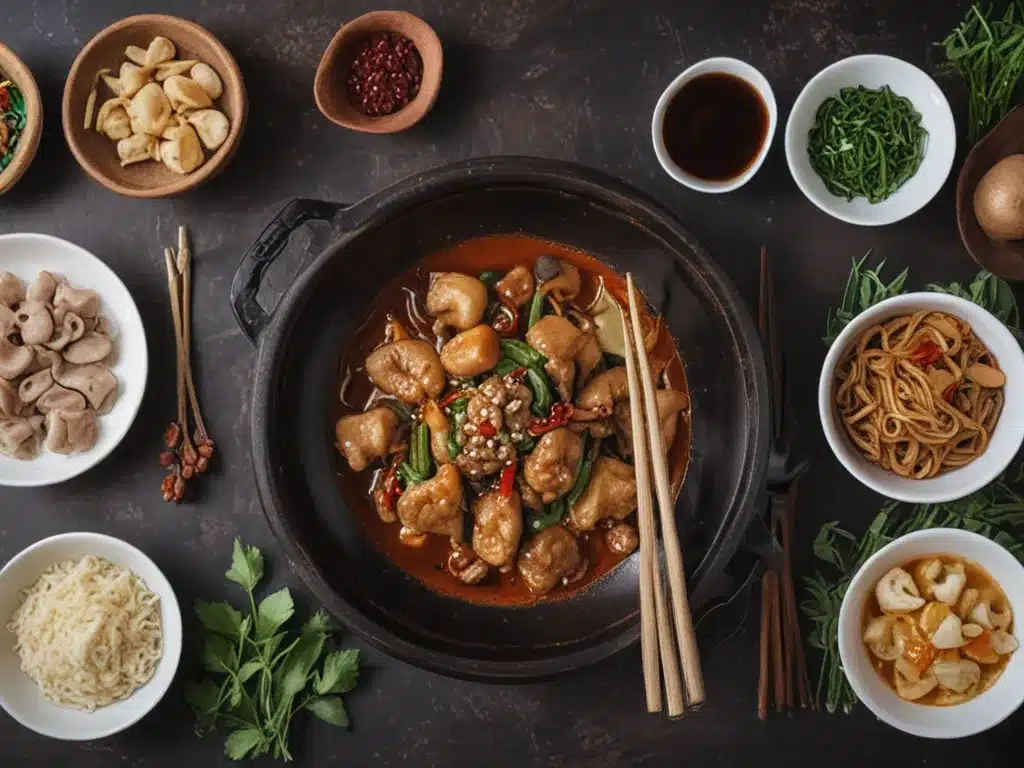
Did you ever wonder how to cook Chinese food but feel intimidated by unfamiliar techniques? Fear not! As someone who has loved Chinese cuisine for years, I want to help demystify some of the most common Chinese cooking methods that you can easily recreate in your own kitchen. Stick with me through this article and by the end, you’ll be ready to start experimenting with new flavors and Chinese recipes.
Stir-Frying (chăo)
One of the most iconic Chinese cooking techniques, stir-frying (chăo) results in food that is tender yet retains its texture. This speedy cooking method quickly seals in flavors while keeping the food crisp and colorful. To stir-fry efficiently, you’ll need a wok or large skillet and very high heat. Always have all your ingredients prepped and near the stove before cooking. To stir-fry meat and vegetables, heat the wok over high heat until smoking. Add a tablespoon of oil, then cook meat for a minute before adding aromatics like ginger and garlic. Cook for another 30 seconds before adding vegetables. Toss and flip ingredients constantly for 2-3 minutes until the vegetables are crisp-tender. Serve immediately while piping hot. Proper stir-frying is a true art, but it’s rewarding to master this versatile technique.
Braising and Stewing (shua)
While stir-frying cooks quickly, braising and stewing (shua) uses low and slow moist heat cooking to create fall-off-the-bone tender meats and flavorful broths. This Chinese cooking method transforms cheaper cuts of meat into meltingly soft dishes. To braise or stew, first brown meat in batches in a pot with oil or fat. Remove meat and set aside. Sauté aromatics like ginger and garlic in the pot until fragrant. Return meat to pot along with liquid like stock, water or wine. Bring to a simmer , cover , and cook over low heat for hours until the meat is fork-tender. Check periodically and add liquid as needed. Long, slow cooking dissolves connective tissue and breakdown collagen for ultimate tenderness. Braised meats are a real treat and perfect for casual comfort meals.
Stir-Frying Noodles
A super versatile Chinese cooking method is cooking noodles by stir-frying. It allows for quick noodle dishes that are full of flavor. Whether using fresh or dried noodles, first have all ingredients prepped and ready. Heat oil in a wok over high heat. Add cooked noodles and toss constantly with a spatula so they don’t clump. When noodles are heated through and just starting to brown, push them to the side, add aromatics like ginger and garlic to the center, and cook for 30 seconds. Return noodles to center and toss to coat. Add protein and/or vegetables. Continue tossing ingredients together for a few minutes until everything is piping hot and fully combined. Remove from heat, add sauce, and toss to coat. Stir-fried noodles are quick and easy but still contain complex savory flavors in every mouthful.
Steaming (zheng)
Arguably the simplest of Chinese cooking techniques, steaming (zheng) allows food to cook through contact with steam without ** adding extra fat or calories. Although an uncomplicated process, proper steaming requires care to retain the food’s texture, color and nutrients. To steam, place ingredients in a bamboo steamer basket or metal colander. Heat a few inches of water in a pot or wok until simmering. Set the steamer basket or colander above the boiling water, making sure the bottom isn’t touching the water. Cover and steam for the recommended cooking time until ingredients are just cooked through. Pay close attention to avoid overcooking. Delicate foods like leafy vegetables and fish only need a few minutes while denser items require longer ** steaming. Steamed foods come out tender yet still toothsome making it a key technique for Chinese home cooking.
Deep Frying (zhá)
While deep-frying (zhá) is high in calories, occasional use can add crunchy texture to dishes. Proper deep-frying means heating oil to the correct temperature, usually 350°F, so ingredients cook through before absorbing too much oil. For best results, use a thermometer. To deep-fry, pat ingredients dry and slowly lower into preheated oil using a spider, tongs or chopsticks. Shallow frying in a small amount of oil is a good way to deep fry in moderation. Deep frying in smaller batches allows oil temperature to recover between additions. Remove ingredients with a slotted spoon once they reach a light golden brown and drain on paper towels. ** Fried foods should still be crispy when eaten within 20 minutes. Occasional deep frying adds texture while preserving most nutrients when done** properly.
I hope this overview of common Chinese cooking techniques piques your curiosity to give them a try! Starting with stir-fries, braises or dim sum recipes is a great low-pressure way to get comfortable with each method. With practice, you’ll be whipping up Chinese dishes confidently in no time. Let me know if you have any other questions – I’d be happy to provide recipe recommendations or additional explanations.






